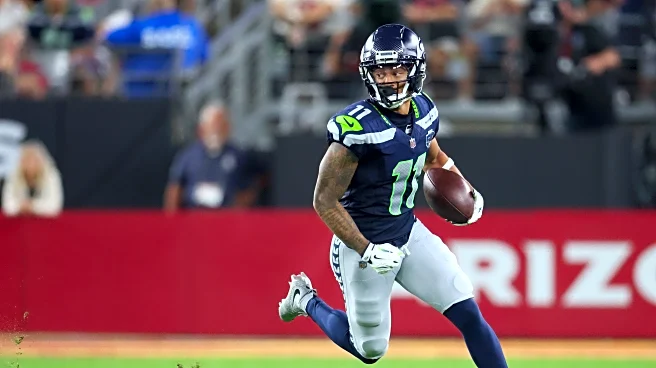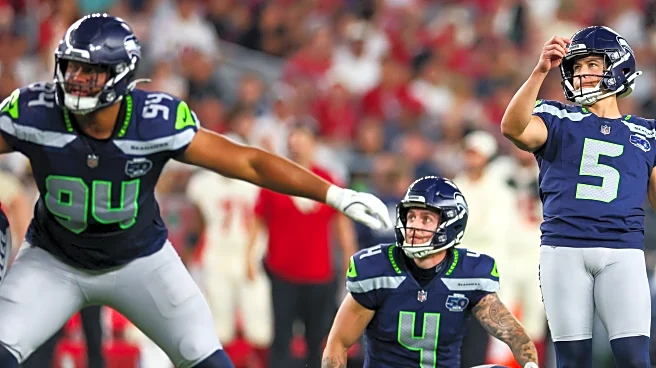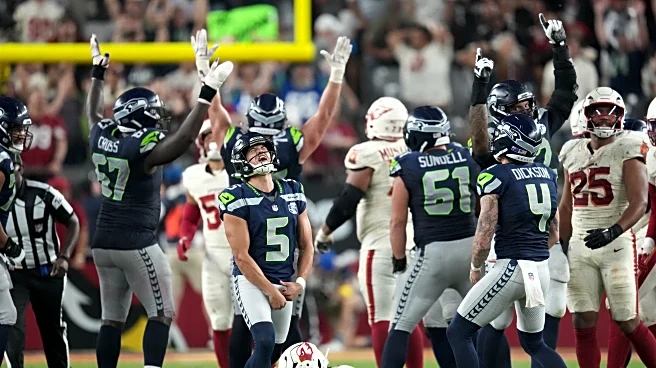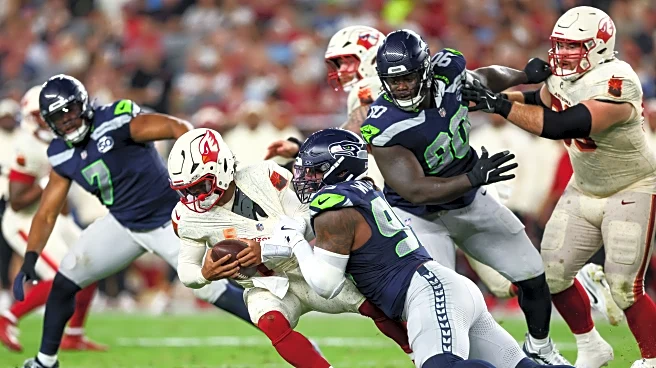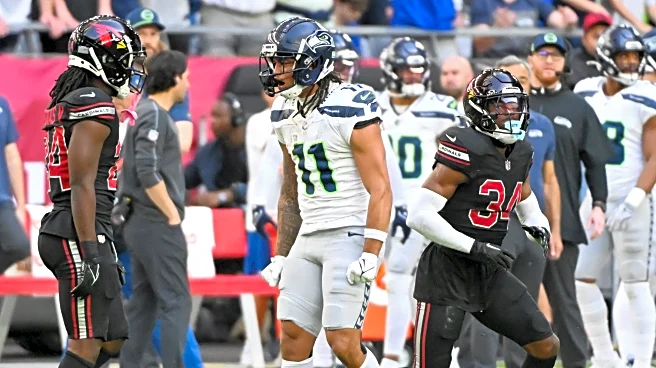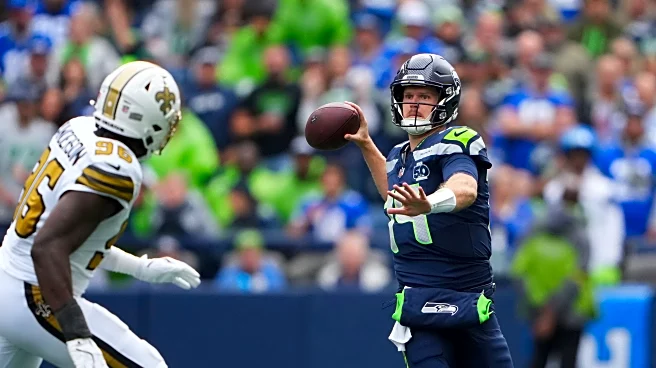What's Happening?
In a strategic move during Thursday night's game, the Seattle Seahawks used a late timeout to set up a game-winning drive against the Arizona Cardinals. With 33 seconds left on the clock, the Seahawks stopped the clock after Arizona's running play on first and goal from the seven-yard line. The Cardinals scored on the next play and tied the game with a single PAT, leaving the Seahawks with 28 seconds to position kicker Jason Myers for a field goal attempt. Arizona's kickoff strategy aimed to force Seattle to scramble for the ball, but the kick landed short, giving Seattle possession at the 40-yard line. Quarterback Sam Darnold completed a 22-yard pass to Jaxon Smith-Njigba, followed by a four-yard run from Zach Charbonnet, setting up Myers for a successful 52-yard field goal, securing the win.
Why It's Important?
The Seahawks' victory highlights the critical importance of clock management and strategic decision-making in late-game situations. The outcome underscores how new kickoff rules can influence game dynamics, particularly in close matches. Seattle's ability to capitalize on the Cardinals' kickoff error and effectively use their timeout demonstrates the team's tactical acumen. This win could impact the Seahawks' standing in the league, boosting their confidence and potentially influencing playoff prospects. For the Cardinals, the loss serves as a lesson in the importance of timing and execution in scoring plays.
What's Next?
The Seahawks will likely review their strategies to maintain their competitive edge in upcoming games. The Cardinals may reassess their approach to late-game scenarios, focusing on improving clock management and kickoff execution. Both teams will prepare for their next matchups, with Seattle aiming to build on their momentum and Arizona seeking to recover from the defeat.
Beyond the Headlines
The game illustrates the evolving nature of NFL strategies, where teams must adapt to rule changes and leverage every opportunity to secure victories. The emphasis on clock management and strategic use of timeouts could influence coaching decisions and player training across the league.


